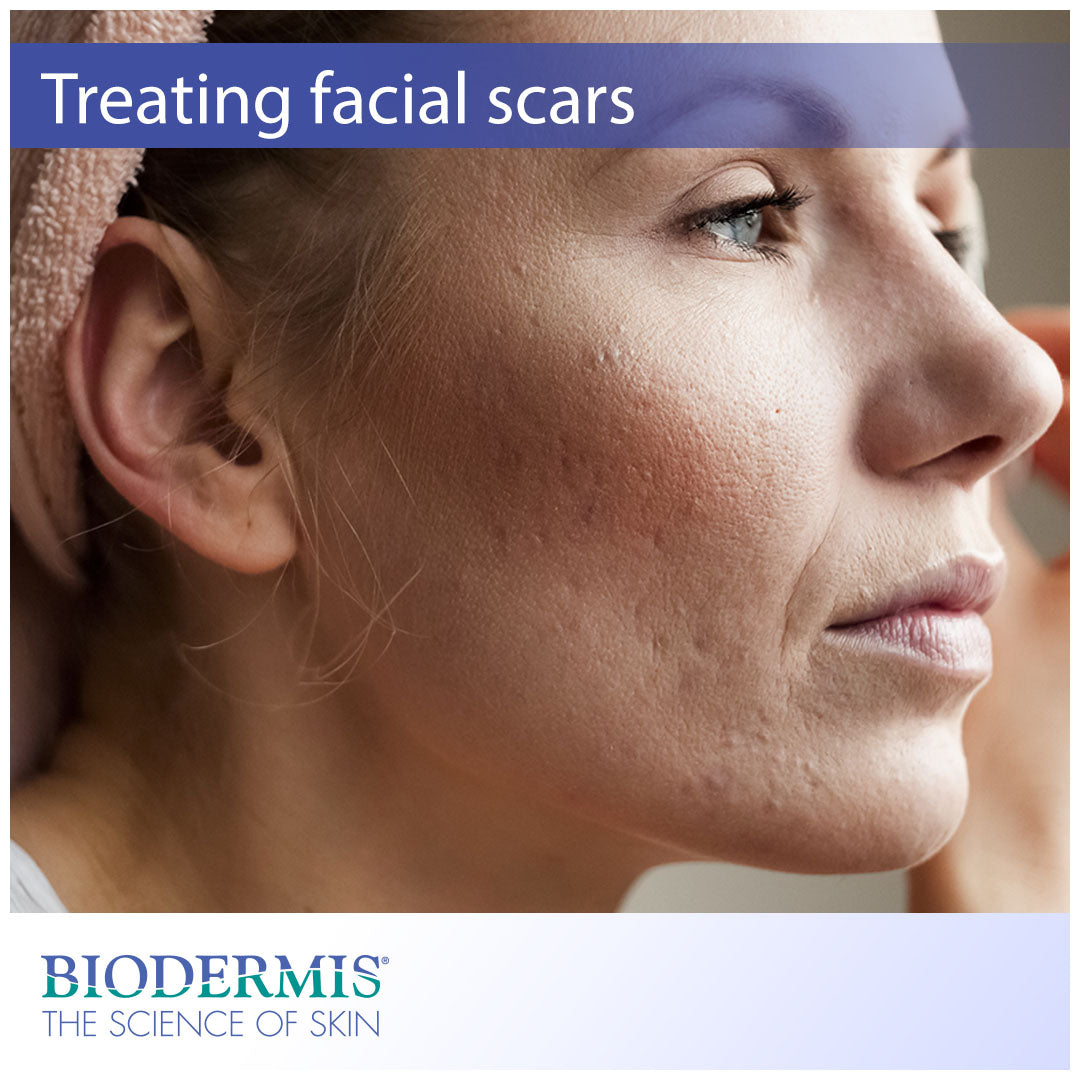Facial scars tend to cause a lot of problems for people because they are often more noticeable than scars elsewhere on the body. Scars that form on the face can be the result of adolescent acne, facial plastic surgery, a dog bite or many other types of injuries. For some, a scar on the face can be a source of dissatisfaction or low self-esteem. For others, it is simply a nuisance. Luckily, whether you have old or new scars, there is a way to effectively reduce their appearance and restore your face to its former beauty.
Continue reading to learn more about facial scars and what you can do to minimize their appearance.
Facial scars
Scars on the face are the result of an intricate wound-healing response that occurs when the dermis (middle) layer of skin is damaged. The process of wound healing involves four distinct stages: hemostasis (blood clotting), inflammatory (redness and pain), proliferation (new tissue), and maturation (skin remodeling and scarring). There are several factors that can determine how noticeable your scar will be once the wound has fully healed. Facial wounds that become infected will take longer to heal and will likely result in greater scarring. It’s important never to touch your face to avoid spreading germs and increasing the risk of infection. If you have an acne breakout, try not to pop your pimples as this can cause greater scarring later in life.
Many facial scars become what are known as atrophic scars. These scars appear sunken and pitted due to a loss of collagen in the region. Severe acne often leads to atrophic scarring so it’s recommended to treat acne early on to prevent scar formation. Other scars on the face can form as a result of facial cosmetic surgery. Even though many skilled surgeons take pride in leaving minimal scarring after surgery, some patients still experience significant scarring in the form of keloids and hypertrophic scars due to genetics. These scar types tend to be raised and discolored rather than sunken and pitted. While some facial scars may be unavoidable depending on the circumstance, there are clinically-proven ways to help reduce and fade old and new scars.

Clinically-proven scar therapy
Silicone gel technology is the only clinically-proven topical solution to manage and treat old and new scars. Medical-grade silicone for scars is backed by over 30 years of clinical evidence, making it the top choice for physicians and patients around the world. As an alternative to costly laser therapy, silicone for scars is a great option for any scar type attained from surgery or injury. But how does it work and how is it used?
Silicone gel comes in a variety of different forms including silicone sheets, sticks, and ointments. Topical silicone works through the mechanisms of dermal hydration and collagen regulation. By covering the scar site with silicone for long durations of time, the user is able to create an optimal healing environment of oxygen and moisture for the scar, otherwise known as homeostasis. The encapsulated scar site will retain moisture that would otherwise be lost through transepidermal water loss. This moisture retention then helps to regulate the collagen that is being restructured and strengthened at the scar bed. The final result is a flatter and smoother scar that blends in well with the surrounding skin tissue.
Continue reading to learn more about facial scars and what you can do to minimize their appearance.
Facial scars
Scars on the face are the result of an intricate wound-healing response that occurs when the dermis (middle) layer of skin is damaged. The process of wound healing involves four distinct stages: hemostasis (blood clotting), inflammatory (redness and pain), proliferation (new tissue), and maturation (skin remodeling and scarring). There are several factors that can determine how noticeable your scar will be once the wound has fully healed. Facial wounds that become infected will take longer to heal and will likely result in greater scarring. It’s important never to touch your face to avoid spreading germs and increasing the risk of infection. If you have an acne breakout, try not to pop your pimples as this can cause greater scarring later in life.
Many facial scars become what are known as atrophic scars. These scars appear sunken and pitted due to a loss of collagen in the region. Severe acne often leads to atrophic scarring so it’s recommended to treat acne early on to prevent scar formation. Other scars on the face can form as a result of facial cosmetic surgery. Even though many skilled surgeons take pride in leaving minimal scarring after surgery, some patients still experience significant scarring in the form of keloids and hypertrophic scars due to genetics. These scar types tend to be raised and discolored rather than sunken and pitted. While some facial scars may be unavoidable depending on the circumstance, there are clinically-proven ways to help reduce and fade old and new scars.
Clinically-proven scar therapy
Silicone gel technology is the only clinically-proven topical solution to manage and treat old and new scars. Medical-grade silicone for scars is backed by over 30 years of clinical evidence, making it the top choice for physicians and patients around the world. As an alternative to costly laser therapy, silicone for scars is a great option for any scar type attained from surgery or injury. But how does it work and how is it used?
Silicone gel comes in a variety of different forms including silicone sheets, sticks, and ointments. Topical silicone works through the mechanisms of dermal hydration and collagen regulation. By covering the scar site with silicone for long durations of time, the user is able to create an optimal healing environment of oxygen and moisture for the scar, otherwise known as homeostasis. The encapsulated scar site will retain moisture that would otherwise be lost through transepidermal water loss. This moisture retention then helps to regulate the collagen that is being restructured and strengthened at the scar bed. The final result is a flatter and smoother scar that blends in well with the surrounding skin tissue.
Biodermis is an innovative market leader with 30 years of expertise in the medical silicone industry. Visit Biodermis.com today to explore a complete range of scar management and post-operative care solutions.
PHYSICIANS AND MEDICAL PROFESSIONALS: REFER OR RESELL?
Biodermis offers custom tailored referral programs designed to simplify and reduce the cost of your patients' post-op care. Additionally, we offer professional pricing if you opt to retail our products. Give us a call at 800.322.3729, and we will be happy to provide additional details on these programs.



